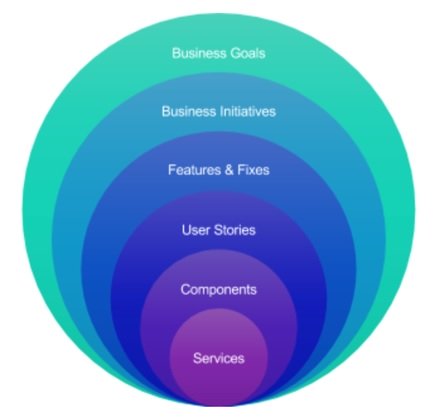Digital transformation isn’t simple, but must succeed if businesses are to embrace the challenge of interruption and continue to create value.
Rapid progress in technologies, powering mobile and web adventures, has enabled startups to interrupt well-established business models . Startups are redefining what it means to be best in class by leveraging technology.
But using this technology is insufficient. Equally significant is the project delivery model and behind startup success stories is the practice of Agile. Enterprises are keen to understand while avoiding the pitfalls of implementing delivery practices in 24, the way to be agile like these startups.
Here are just seven best practices drawn from my experience of working with large enterprises on the road.
Understand the big picture
Digital transformation is all about business results. The most effective electronic roadmaps are the ones which are aligned with business strategy from the top down – large image goals influence the prioritisation of attributes ; and bottom up – that the newest technology trends are channeled to executives to help determine their thinking on the art of the possible.
It can be valuable to have a mental model of how of the pieces of plan come together to finally deliver business value.

Business goals: Usually measurable achievements, for example ‘double market share’.
Business initiatives: Specific projects that function to achieve the company objectives, for example launching a mobile program to increase engagement with millennials.
Characteristics and fixes: The outputs in the electronic delivery group utilized by the project teams driving business initiatives.
User stories: Chunks of work which describe individual user journeys or workflows, bundled in a way which is convenient for applications engineers to construct.
Components: Software modules that collectively create an intuitive user interface or application programming interface (API) to fulfill consumer stories.
Services: Data flows stitched together to feed the components described above with the information that they need to satisfy their functions. These can be sourced internally or via an external third party supplier.
Build a stage
Building a stage requires designing a technology architecture that promotes. From the diagram above, the stage comprises solutions and the components. Part of this challenge of constructing a roadmap that is fantastic is currently thinking about how to increase reusability of solutions and these components.
Be agile but have a plan
There are a lot of moving parts to consider when building a client experience platform. In massive enterprises, stakeholders tend to spread throughout the globe if your software development group is on the opposite side of the world, and communicating can be hard. Possessing a program helps maintain communication and confidence.
And although it’s good to be flexible and nimble like a startup, when doing agile at scale, there is a baseline plan essential. Without it transformations can burn money and a little period of team underutilisation can have large impacts.
I recommend planning in components of features and constraining each feature’s size. As priorities are tasteful the plan can be reorganised.
Function in programme increments
While agile is usually associated with two-week sprints it’s helpful also to plan and execute quarterly stretches (13 weeks). This enables the staff to align image goals about launching a mobile experience that is new, for example Q1 might be about improving performance and Q2 may be.
Working in that are programme allows for the entire team to reflect and celebrate accomplishments on a regular basis.
Keep an thoughts pipeline
The best ideas can come from anywhere therefore there is a procedure required to enable refinement, prioritisation and catch of new thoughts.
This gives the content to alert future roadmap and the company strategy.
Use the Ideal tools for the right job
Tools such as Redmine, Jira and Pivotal Tracker are fantastic for developing user stories and tracking their execution. But when it comes to reporting progress against it and creating a characteristic roadmap, it is ideal to do this out of these trackers.
Features may be described and prioritised in almost any tool a spreadsheet. After the characteristics in the roadmap are baselined, the list of features can be imported as epics to get further user narrative definition.
Put your marketing hat on
Finally, it’s important to aid stakeholders appreciate the value of what is to be sent. This involves thoughtful use of words and images to assist in conveying the content of their roadmap.
Wherever possible, use meaningful, short, and easy to recall titles for features. A great illustration of this is Tesla cars’ characteristic which lets them drive themselves. Tesla could have called this attribute something such as ‘autonomous driving agent based artificial neural network processing of surroundings data’, which would have been accurate, but not inspiring as the name ‘Autopilot’ to the user.
The challenges of driving an electronic roadmap could be overcome by detecting some management principles that are key. Bear in mind that finding the best model for your organisation, and enhancing your digital shipping is a process will require some experimentation. Rest assured though that the effort that you put into this will be well worth by accelerating invention in your 23, the benefits realised.

